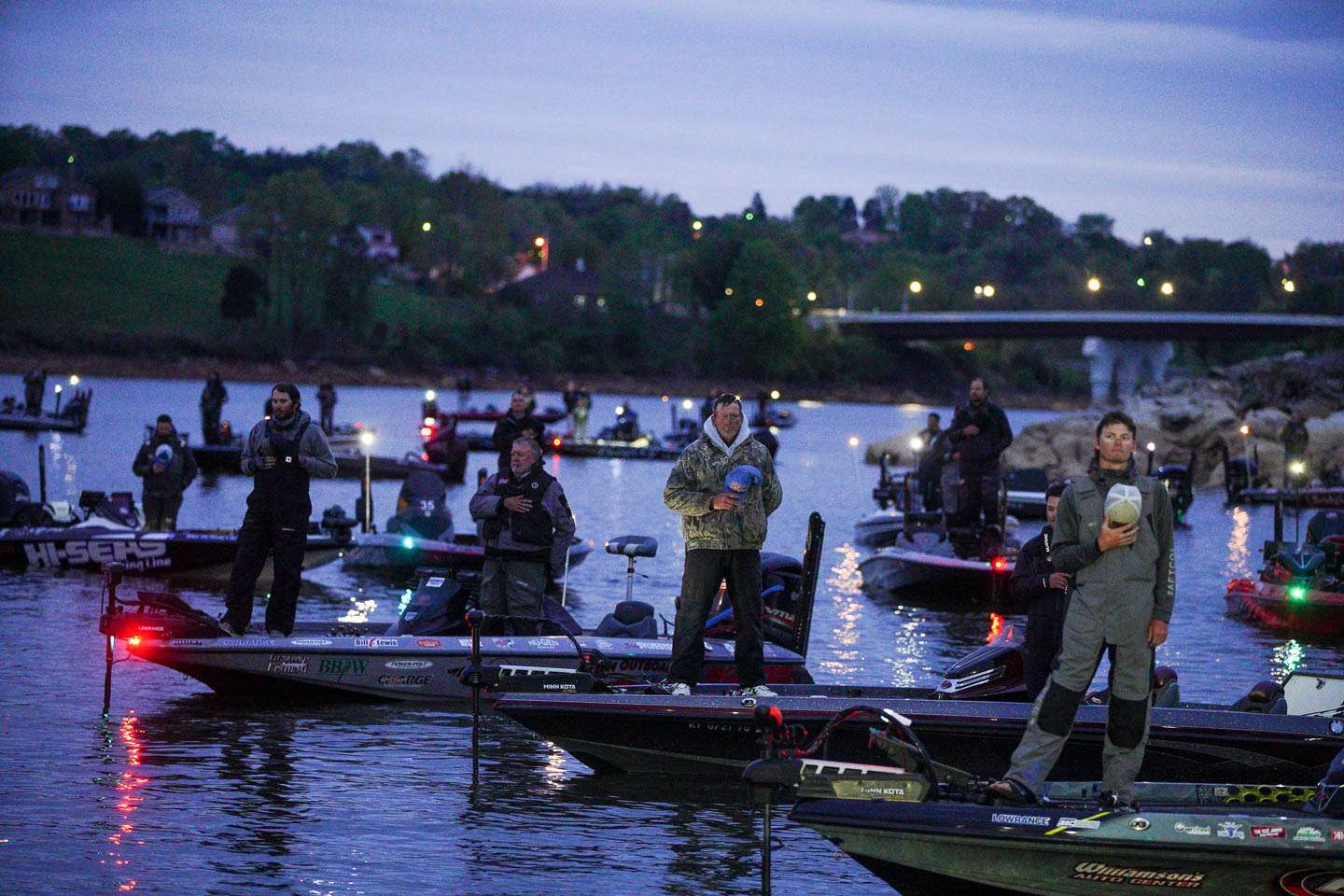
DANDRIDGE, Tenn. — The good news is the largemouth on Douglas Lake are generally moving in the same direction. Shallow. The spawn is in full swing, as it has been for several weeks, with a caveat, at the Basspro.com Bassmaster Open at Douglas Lake.
Recent rounds of spring rains raised the water level on the lake to above full pool, forcing the Tennessee Valley Authority to lower the water in anticipation of more seasonal precipitation.
The lake dropped 4 feet in the last five days. Spawning beds dried up, and the females moved out with the falling water, leaving the anglers with tough decisions to make going into the competition.
“You have females trying to spawn, and then you have water dropping on top of their heads,” said boater Hunter Sales, of Jefferson City, Tenn. “It’s making them really finnicky as they relocate to deeper cover and try to spawn again.”
To his point, the coach of the Carson-Newman University bass fishing team said the shallowest fish are more prone to being spooked than any other location in the water column.
“Those fish are on the really shallow rock shelves and they can feel and hear every little vibration made by a boat,” he said. “They are really easy to spook.”
He continued, “you might see 20 fish but only catch one, because the others will scatter.”
That leaves two options for anglers targeting actively spawning bass. Search for sight fish or follow the displaced bass to deeper water and blind cast at those bedding fish.
Count Jacob Powroznik in the latter group. The Virginia pro is intentionally targeting the more dependable bass that have settled, at least temporarily, in the secondary spawning areas influenced by the falling water.
“I’m fishing for spawning bass that I cannot see,” he said. “Tuesday afternoon, the carp started moving into the upper water column, and Wednesday they were swimming around everywhere on the bank, so I take that as a good sign.”
Another good sign is the TVA is putting the brakes on the generation schedule after bringing Douglas down to a manageable level. On Thursday, the average inflow prediction is 9,295 cfs with an outflow of 7,135 cfs. The lake elevation will hold steady at 983 feet above sea level, with a rise of 1 foot by Championship Saturday.
“The really good thing about this setup is the weights are going to be tight,” said Powroznik. “That means one 5-pounder will set you apart; two will put you at the top.”
Charlie Hartley is also targeting spawning bass that he cannot see, knowing the fishing will improve as the water stabilizes.
“The females are biologically committed to spawn, and I’m catching more bedding bass that I can’t see,” said the Ohio pro. “They are bedding on anything they can find in the deeper water, a rock, a log, anything.”
Hartley predicted the odds are high of the full field weighing limits, with the weights tight from top to bottom.
“The difference between 10 and 12 pounds will be huge,” he said.
Sales predicted that 13 1/2 pounds today and Friday will make the cut; anything over that mark will be a strong contender to win.
Sales also predicted success will come down to a classic junk fishing scenario.
“I think you’ll have to mix it up,” he said. “Catch some on beds and then back off to some offshore spots.”
He added, “Some of the postspawners are getting forced into a really quick transition into deeper water, moving into 15 or 20 feet.”
The water level might stabilize, but there is another factor to contend with that is common to springtime rains. Here, that will be a cold front. The daytime high on Wednesday was 73 degrees with a low in the 50s. The Thursday forecast calls for highs in the low 60s and nighttime lows in the low 40s. it’s more of the same for Friday and Saturday, including a 50 percent chance of rain.
What will that do to the fishing already in a state of flux from the falling water level? The answers will come on Thursday afternoon, along with more questions on what to do next.

